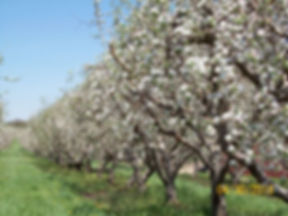Gearing Up for Garden Time
- Josh Hebert
- Mar 4, 2022
- 3 min read

The sun is shining, the birds are singing, you can see bits of green breaking through the brown, barren landscape – spring is coming.
If you’re dreaming about long, warm days spent enjoying fresh produce from the garden, you’re not alone. Before you can reap the harvest, though, you’ve got to put in the work.
March can be a tricky month – the weather often plays with your emotions. It’s not unheard of to have both swimsuits and winter coats out in the same week, and all of the fluctuating temperatures can make it seem impossible to know when to start your garden. That’s why much of March is spent in preparation for the warmer months. There are a few cool-weather crops you can plant, but arguably the most important part of the gardening process is preparing your soil.
Preparing your soil
It’s 100% possible to do a deep-dive into soil preparation where you’ll learn all about the microcosm of biology held within a fist-full of dirt. To keep from becoming overwhelmed, though, the most important thing to keep in mind when preparing your soil is that your fruits and vegetables need nutrients to grow– much like people do. These nutrients can be naturally present, but when you use and reuse soil, it becomes necessary to supplement.
In the spring, as the weather starts to warm up, remove rocks and debris from your designated garden area. After you have a cleared out area, you’ll want to loosen your soil, which allows plant roots to dig down deep. If you’re planting directly into the ground, this can be done using a tiller. If you’re using above-ground planters, you can use a shovel or other garden tool to loosen the soil.
Next, you’ll need to add organic nutrients to your soil. There are many ways to do this, like using compost or manure. All you need to do is spread a minimum of two inches of the compost matter onto the surface of your garden. Some people dig the compost into the soil, while others think it’s best to keep the infrastructure of the soil and leave the compost on the surface. The latter technique also keeps you from exposing more weeds in your garden. If you have poor soil, you may be better off digging the nutrients into the ground, which will help distribute them.
Finally, use a rake to level the soil.
Planting
In March, you can plant a variety of cool-season crops. The majority of these crops will be ready to harvest by the time you plant your summer vegetables.
Here are the crops recommended for Kansas planting in March:
Potatoes
Peas
Onions
Lettuce
Other Salad Greens
Rhubarb
Strawberries
Asparagus
Towards the end of the month, you can also plant:
Broccoli
Cauliflower
Cabbage
There are many techniques used for planting each kind of crop, so be sure to do your research when it comes to choosing the location for each plant.
Preparing summer crops
Now is the time to begin your summer seedlings. Hot-weather plants like tomatoes and peppers need a while to grow before they’re ready to be transplanted outside.
You can use specifically-created planters to start these seedlings, or there are a variety of other planters you can use, like an egg carton with holes poked in the bottom. If you want to make biodegradable planters, try starting the seedlings in empty, clean egg shells. That way you don’t have to worry about disturbing the plants’ root systems when transplanting.
Finish pruning and other tree prep
Because the weather is becoming warmer, you’ll want to finish pruning your fruit trees as soon a possible. It’s important to avoid pruning after the tree begins to leaf out. Otherwise, you could shock the tree and end up damaging your fruit production.
You’ll also need to begin spraying your trees at this time of year. This helps protect your trees from disease and pests. If you need more information about fruit tree spraying, visit this link:
https://www.ksuhortnewsletter.org/newsletters/apple-tree-sprays5995068
March is such an encouraging time of year – flowers begin to bloom, birds are singing, and you get to put in some labor so you can enjoy the harvest later in the year! As always, our staff at Pome on the Range is happy to share our produce-growing knowledge with you! Stop by and let’s talk gardens!
For more information on how to prepare your garden for the spring, check out these links:
https://www.johnson.k-state.edu/lawn-garden/gardening-calendar/march.html
https://www.almanac.com/preparing-soil-planting

